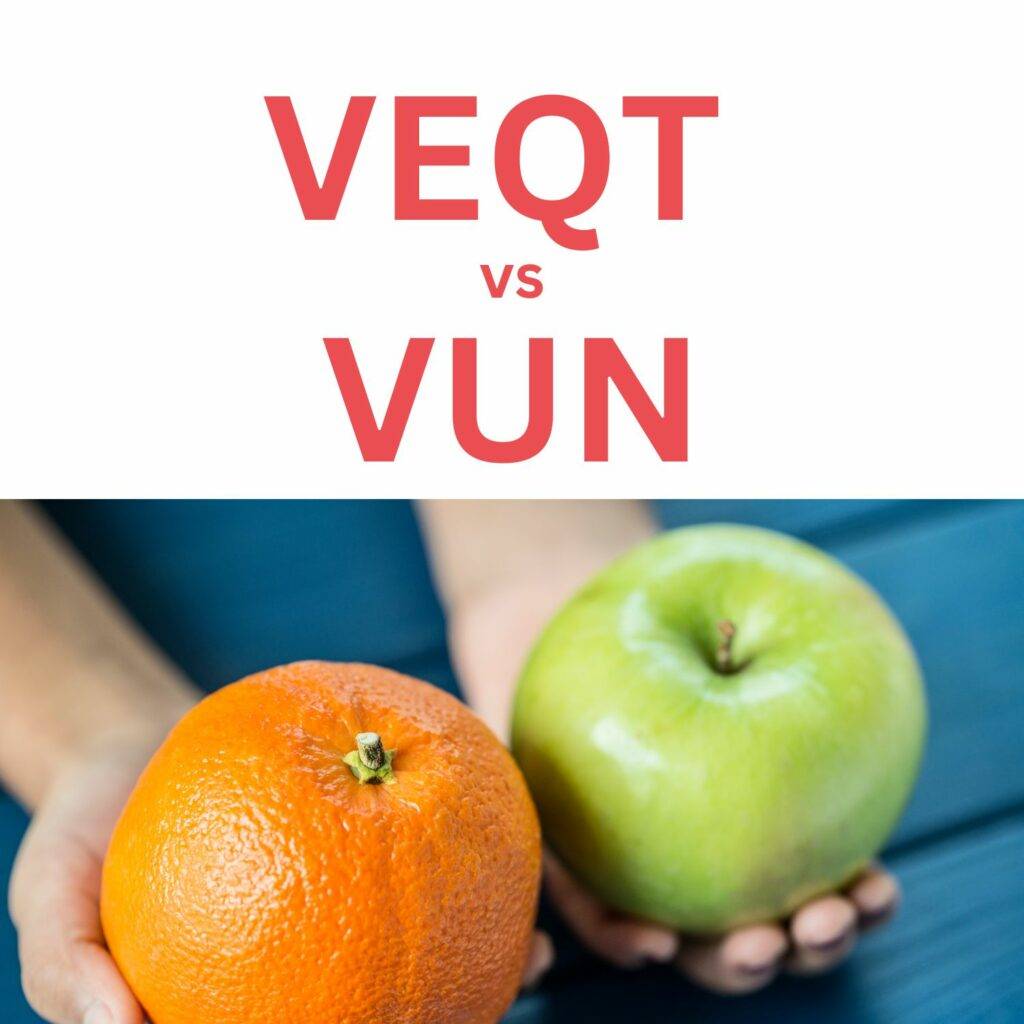In the realm of Canadian Exchange-Traded Funds (ETFs), two notable options are VUN (Vanguard U.S. Total Market Index ETF) and VEQT (Vanguard All-Equity ETF Portfolio). Each fund caters to different investment strategies and goals, and understanding their nuances is key to determining which might be a better fit for individual investors (VUN vs VEQT).

Fund Overview and Composition
Starting with VUN, this fund aims to replicate the performance of the CRSP US Total Market Index. It provides a comprehensive exposure to the entire U.S. equity market, encompassing a wide range of stocks from small, mid, to large-cap growth and value companies. In contrast, VEQT focuses on long-term capital growth by primarily investing in equity securities. It stands out as an all-equity fund, holding a diversified portfolio of global stocks. This includes equities from Canada, the U.S., and various international markets.
Geographical Exposure and Diversification
The geographical exposure and diversification of these two ETFs vary significantly. VUN is exclusively focused on the U.S. market, offering investors a channel to gain exposure to the U.S. economy and its diverse sectors. On the other hand, VEQT provides a more global reach, with significant investments in North America, Europe, Asia, and emerging markets. This global diversification enables VEQT to spread its investments across different economies and market conditions.
Risk and Return Profile VUN vs VEQT
When it comes to the risk and return profile, VUN’s performance and risk are closely tied to the U.S. stock market. Its focus on the U.S. market means potentially less diversified risk compared to VEQT. VEQT, with its global diversification, can potentially reduce country-specific risks. This broad diversification may lead to a more balanced risk-return profile over the long term.

Investment Strategy
From an investment strategy perspective, VUN is ideal for investors whose focus is on U.S. market growth. It is well-suited for portfolios that need U.S. equity exposure to complement other international holdings. Conversely, VEQT is designed for those seeking broad, diversified global equity exposure in a single ETF. It can serve as a standalone option for long-term growth in a diversified portfolio.
Dividend Yield Considerations
Dividend yields also differ between these two ETFs. VUN provides a dividend yield that mirrors the average of the U.S. market, catering to investors looking for U.S.-sourced income. VEQT, however, offers a composite dividend yield from its global holdings, with the yield varying depending on the dividend policies of different global markets.
Expense Ratios and Fees VUN vs VEQT
Regarding expense ratios and fees, VUN (MER= 0.17%) typically features a low expense ratio, characteristic of Vanguard ETFs, making it cost-efficient for those specifically seeking U.S. market exposure. VEQT (MER= 0.22%) might have a slightly higher expense ratio due to its global diversification, yet the fee remains competitive given its broad global exposure.
Conclusion: Choosing Between VUN and VEQT
In conclusion, the choice between VUN and VEQT largely hinges on an investor’s specific investment goals, risk tolerance, and desired market exposure. VUN stands out for those seeking concentrated U.S. market exposure, while VEQT appeals to investors looking for a globally diversified portfolio. Both ETFs offer distinct advantages, and the most suitable choice varies based on individual portfolio needs and long-term investment strategies.

